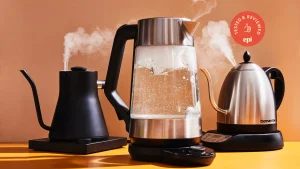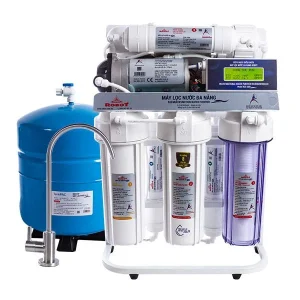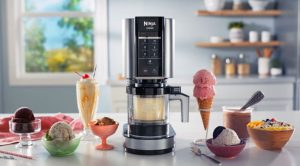Refrigerator: What Is It? How It Works, Applications, and Safe Usage Tips

A refrigerator is an essential appliance in every modern kitchen, used primarily for keeping food and beverages cold. It operates by removing heat from the interior to maintain a cool environment, preventing the growth of bacteria and preserving the freshness of food. In this article, we’ll explore what a refrigerator is, how it works, its practical applications, and how to use it safely.
1. What Is a Refrigerator?
A refrigerator is an electrical appliance designed to store food and drinks at low temperatures to prolong their shelf life and prevent spoilage. It works by cooling the interior to below room temperature, which slows down bacterial growth and enzymatic reactions in food.
Common Types of Refrigerators:
- Top Freezer Refrigerator: This is one of the most common refrigerator types, where the freezer is located at the top, and the refrigerator section is beneath it. It is typically more affordable and provides good storage space.
- Bottom Freezer Refrigerator: In this model, the freezer is located at the bottom, making it easier to access the fridge section. It offers a more ergonomic design.
- Side-by-Side Refrigerator: This type has the fridge and freezer compartments placed side by side. It provides easy access to both sections but may have smaller storage space compared to top and bottom freezer models.
- French Door Refrigerator: These refrigerators have two side-by-side doors for the fridge and a bottom drawer for the freezer. They often include advanced features like ice and water dispensers.
- Compact/Portable Refrigerators: These are smaller models typically used in dorm rooms, offices, or as secondary refrigerators. They have limited storage capacity and are often more affordable.
- Wine Coolers: Specialized refrigerators designed specifically for storing wine at optimal temperatures, usually featuring adjustable racks and precise temperature controls.
Benefits of a Refrigerator:
- Preservation of Food: A refrigerator helps to keep perishable foods fresh for longer, reducing food waste.
- Convenience: It provides easy access to cold beverages, leftovers, and fresh ingredients.
- Energy Efficiency: Modern refrigerators are designed to consume less energy while providing effective cooling, reducing electricity costs.
2. How Does a Refrigerator Work?
The working principle of a refrigerator involves removing heat from its interior and releasing it outside, thereby lowering the temperature inside the appliance. This cooling process is based on the principles of thermodynamics and refrigeration cycles.
Key Components of a Refrigerator:
- Compressor: The compressor is the heart of the refrigerator’s cooling system. It compresses refrigerant gas, turning it into a high-pressure, high-temperature gas.
- Condenser Coils: The high-pressure gas moves through the condenser coils located at the back or bottom of the refrigerator. As it passes through these coils, the gas cools and condenses into a liquid.
- Expansion Valve: The condensed refrigerant passes through an expansion valve, which causes the pressure to drop, turning the liquid refrigerant into a cold, low-pressure liquid.
- Evaporator Coils: The cold refrigerant flows through the evaporator coils inside the refrigerator. As it evaporates, it absorbs heat from the air inside the fridge, cooling the environment.
- Thermostat: The thermostat monitors the temperature inside the refrigerator and regulates the cooling process by turning the compressor on and off to maintain the desired temperature.
- Refrigerant: This is the substance that circulates through the refrigeration system, absorbing and releasing heat to maintain the cooling effect.
Cooling Process:
- The compressor compresses the refrigerant gas, increasing its pressure and temperature.
- The gas moves through the condenser coils, where it cools down and condenses into a liquid.
- The liquid refrigerant passes through the expansion valve, where it rapidly decreases in pressure and temperature.
- The cold refrigerant flows through the evaporator coils, absorbing heat from inside the fridge and cooling the air.
- The refrigerant then returns to the compressor, and the cycle repeats.
This continuous cycle ensures that the refrigerator remains cool, preserving the food inside.
3. Applications of a Refrigerator
Refrigerators are essential in many environments for storing perishable goods and keeping food at safe temperatures. Here are some common applications:
Home Use:
- Food Preservation: In households, refrigerators are primarily used for storing perishable food such as fruits, vegetables, dairy products, meats, and leftovers. This helps extend the freshness and shelf life of food items.
- Beverage Cooling: Refrigerators are also used to store beverages like water, soda, beer, and juices at a cold temperature for consumption.
- Freezing Food: Most refrigerators have a freezer compartment that allows users to store frozen foods, ice cream, and leftovers for long-term preservation.
Commercial Use:
- Grocery Stores: Refrigerators are used in grocery stores to keep fresh produce, dairy products, and meat products cool to prevent spoilage.
- Restaurants and Cafes: In restaurants and cafes, refrigerators are crucial for storing ingredients, beverages, and prepared foods. Commercial refrigerators often have larger capacities to handle higher volumes.
- Hotels and Catering Services: Refrigerators in hotels and catering services are used to store food and drinks for guests and events.
- Pharmaceuticals and Laboratories: In medical and laboratory settings, specialized refrigerators are used to store vaccines, blood, and other temperature-sensitive items.
Industrial Use:
- Food Processing Plants: Refrigerators are used in food processing and storage facilities to preserve ingredients and finished products before distribution.
- Transportation and Logistics: Refrigerated trucks and containers are used for transporting perishable goods over long distances, ensuring that food and pharmaceuticals remain at the proper temperature.
4. How to Use a Refrigerator Safely
While refrigerators are generally safe, it’s essential to use and maintain them properly to avoid accidents and ensure optimal performance. Here are some tips for safe and effective use:
Proper Setup and Placement:
- Level the Refrigerator: Ensure the refrigerator is placed on a level surface to allow proper cooling and prevent the appliance from vibrating or making noise.
- Allow Air Circulation: Ensure there is enough space around the refrigerator, particularly at the back, to allow air to circulate and prevent overheating of the compressor.
- Avoid Overloading: Do not overcrowd the refrigerator as it may affect airflow, leading to uneven cooling.
Regular Maintenance:
- Clean the Interior: Regularly clean the interior of the refrigerator to prevent spills, stains, and the buildup of food particles that may attract bacteria.
- Clean the Coils: The condenser coils at the back or bottom of the refrigerator should be cleaned periodically to ensure the appliance works efficiently. Dust and dirt can cause the coils to overheat, reducing the fridge’s cooling effectiveness.
- Check the Door Seals: The rubber seals on the refrigerator door should be inspected regularly for cracks or wear. If the seals are damaged, cold air can escape, making the refrigerator work harder.
- Defrost Regularly: If your refrigerator doesn’t have an automatic defrost feature, make sure to defrost it regularly to prevent ice buildup in the freezer compartment.
Safe Food Storage:
- Temperature Settings: Keep the refrigerator temperature at or below 40°F (4°C) to ensure food is stored at a safe temperature. The freezer should be set to 0°F (-18°C).
- Use Airtight Containers: Store food in airtight containers or cover them properly to prevent contamination and odors from spreading.
- Don’t Store Hot Foods: Allow hot foods to cool down before placing them in the refrigerator to avoid raising the temperature inside the fridge.
Child Safety:
- Keep Children Away: Refrigerators can have sharp edges, and items inside may be heavy. Keep children away from the refrigerator, especially when it is in operation.
- Avoid Locking the Refrigerator: If you have small children, avoid using refrigerator locks, as this can cause harm in the event of an emergency.
Conclusion
A refrigerator is a vital appliance in every home, business, and industrial setting, ensuring that food and beverages are stored safely and kept fresh for extended periods. Understanding how it works, how to use it safely, and maintaining it regularly will help you maximize its effectiveness and lifespan. With proper care, your refrigerator will continue to provide reliable service, helping you preserve food and reduce waste.







